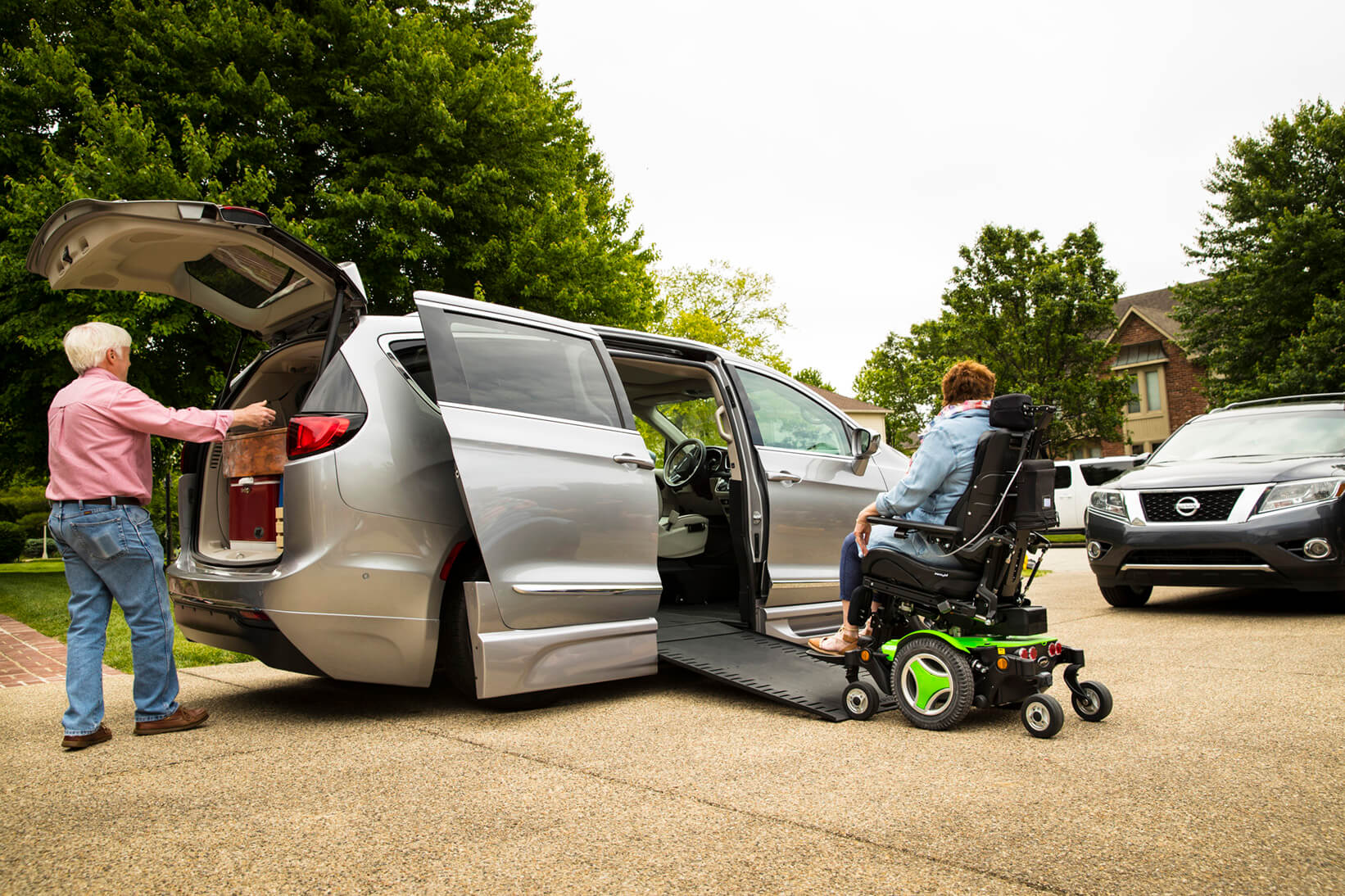
Michigan summers are wild in the best way. One weekend, you’re watching fireworks over the Detroit River, the next you’re off-roading near Silver Lake Sand Dunes, taking pictures of lighthouses along Lake Michigan, or attending the Cherry Festival in Traverse City.
But is your wheelchair van ready for all these summer adventures? During summer, batteries wear down faster, radiators overheat, tires lose grip when exposed to scorching asphalt, and AC blows anything but cool air. To save you the headache, we have put together this handy guide with wheelchair van maintenance tips, expert hacks, and easy fixes for common summer issues.
Beating the Heat: Engine and Cooling System Essentials for Your Wheelchair Van
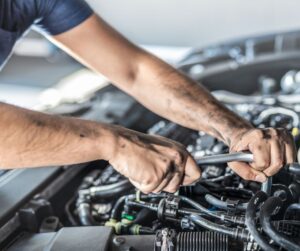 The engine in your wheelchair-accessible van generates a lot of heat, especially during summer. If that heat isn’t managed properly, it can lead to severe damage such as warped engine parts, blown gaskets, or even complete failure. That’s why the cooling system is essential.
The engine in your wheelchair-accessible van generates a lot of heat, especially during summer. If that heat isn’t managed properly, it can lead to severe damage such as warped engine parts, blown gaskets, or even complete failure. That’s why the cooling system is essential.
Coolant and Radiator Basics
Also known as antifreeze, coolant helps regulate your engine’s temperature by carrying heat away from the engine and into the radiator, where it can safely dissipate. This is especially important for mobility vans, which often carry additional weight from conversions and equipment.
Signs of Cooling System Problems
There are a few warning signs to catch early:
- Dashboard temperature warning lights
- Steam from under the hood
- A rising temperature gauge
- Sweet, chemical smells coming from the front of the vehicle (a possible coolant leak)
If you notice any of these, it’s important to stop and have the system checked immediately.
How to Check Coolant Levels Safely
Checking your coolant is quick and simple, but timing is everything. Do it only when the engine is completely cool; otherwise, the scalding liquid might do more damage.
- Open the hood and locate the coolant reservoir. It’s usually a translucent plastic tank with “MIN” and “MAX” markings.
- If the coolant level is below “MIN,” you’ll need to add more.
- If the reservoir is empty, check the radiator directly. Again, make sure the engine is cold. Simply twist off the radiator cap using a rag for grip.
- The fluid should be near the top. To top off the coolant, use a clean funnel and the type of coolant recommended for your vehicle. Avoid mixing types unless the label specifically allows it.
Over time, coolant becomes less effective and can turn acidic, damaging internal components. Most manufacturers recommend flushing the cooling system every 2 to 5 years, depending on the type of coolant used. If you’re unsure, a Clock Mobility technician can test it for you.
Don’t forget the radiator cap. A damaged or weak cap can cause overheating by allowing coolant to boil off too soon. Inspect the cap for wear, cracks, or a broken seal. Replace it if anything looks off.
What Type of Coolant Should You Use?
Coolant comes in different types: conventional (green), extended-life (orange or red), and hybrid options. It’s important to note that mixing incompatible coolants or the wrong type can reduce effectiveness and cause corrosion in your system. To avoid that, check your car manual or speak with a technician to confirm the correct formulation for your wheelchair-accessible van.
Belt and Hoses
Belts and hoses may not seem like much, but these rubber components degrade faster in hot conditions. Combined with engine vibration and pressure, this increases the chance of sudden belt or hose failure, especially during long drives or stop-and-go traffic in summer heat.
Before hitting the road, inspect the belt and hoses.
- Belts (like the serpentine belt) should have no visible cracks, glazing, fraying, or missing chunks. If the edges look worn or the underside shows deep grooves, it may be time for a replacement. Most serpentine belts last between 60,000 to 100,000 miles, but signs of wear can appear earlier in hot climates or under heavy loads. If you hear squealing, it may be due to poor tension or belt misalignment, so you must contact your service technician for inspection.
- Hoses should feel firm but flexible. Watch for bulges, soft spots, cracking along the sides, or any sign of leaking coolant around connection points.
These inspections should be done with the engine off and cool.
Paving the Way: Tire Maintenance for Your Summer Wheelchair Van Adventures
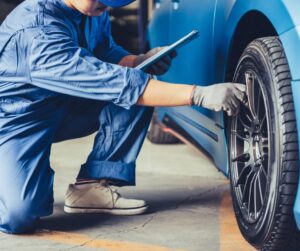 As temperatures rise, so does air pressure inside your tires. On average, tire pressure may increase by 1–2 PSI for every 10°F rise in temperature. Overinflated tires reduce grip and increase wear in the center of the tread, while underinflated tires generate excess heat, which can lead to blowouts.
As temperatures rise, so does air pressure inside your tires. On average, tire pressure may increase by 1–2 PSI for every 10°F rise in temperature. Overinflated tires reduce grip and increase wear in the center of the tread, while underinflated tires generate excess heat, which can lead to blowouts.
How to Check Tire Pressure Accurately
- Driving heats up the tires and can give inaccurate readings. Always check pressure when tires are cold, preferably before driving or at least three hours after parking.
- Use a reliable tire pressure gauge.
- Compare your readings with the manufacturer’s recommended PSI, which is mentioned on the driver’s side door jamb.
This value may differ for front and rear tires, especially if your van has a rear-entry conversion or added equipment weight. So you must check each tire individually. Don’t forget the tire tread. Tread depth affects traction, especially in wet weather. To check:
- Insert a penny into the tread groove with Lincoln’s head facing down.
- If you can see the top of his head, the tread is too shallow, and the tire must be replaced.
A minimum tread depth of 2/32 inch is considered legally worn, but most technicians recommend replacement once it reaches 4/32 inch for safer handling and improved traction. Also, rotate every 5,000 to 7,500 miles or as recommended in your owner’s manual.
Like What you're reading? Subscribe to our Newsletter and get new updates directly to your inbox
Staying Cool and Comfortable: Air Conditioning and Ventilation in Your Wheelchair Van
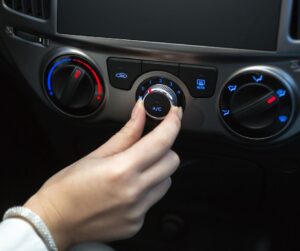 If your A/C isn’t performing well, even short grocery rides can become uncomfortable, especially for passengers with limited mobility or sensitivity to heat.
If your A/C isn’t performing well, even short grocery rides can become uncomfortable, especially for passengers with limited mobility or sensitivity to heat.
Common Signs Your AC Needs Service
If you notice any of the following, your AC system may require maintenance or repair:
- Weak or inconsistent airflow from the vents
- Air that isn’t cooling, even with settings on high
- Rattling or squealing noises when the A/C is turned on
- Strange odors, which may indicate mold buildup in the system
- Fogged windows despite running the system, which can signal poor air circulation
To fix AC performance issues, add refrigerant. It’s best to have the system professionally recharged, especially in wheelchair vans with custom ductwork or extended cabin cooling zones. Ideally, cabin filters should be checked at least once a year.
Mobility System Mastery: Keeping Lifts and Ramps Running Smoothly in Your Wheelchair Van
During summer, dust and road debris can build up on your lift or ramp’s moving parts, making them stiff, noisy, or unreliable.
Regular cleaning is the first line of defense for smooth operation. You should vacuum the door and tie-down track. Use mild soap and water, and avoid harsh chemicals that can corrode surfaces or strip protective coatings.
After cleaning, check your owner’s manual for lubrication points. Apply white lithium grease to metal hinges and joints, and silicone spray to rubber seals or sliding surfaces.
If your van has an electric lift, check the lift’s battery or the main vehicle battery for charge and connection strength. Also, inspect hydraulic lines, belts, and cables for cracks, fraying, or leaks. Finally, test the emergency override or manual operation feature, so you’re not caught off guard during a power issue.
Guarding Your Tech: Protecting Electrical Systems from Heat Damage in Your Wheelchair Van
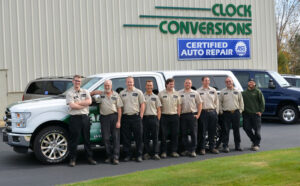 Summer heat can accelerate battery wear, dry out wiring insulation, and even cause fuses or relays to fail under load. In wheelchair vans, where electronics power lifts, ramps, and adaptive driving controls, system failures can affect safety and access.
Summer heat can accelerate battery wear, dry out wiring insulation, and even cause fuses or relays to fail under load. In wheelchair vans, where electronics power lifts, ramps, and adaptive driving controls, system failures can affect safety and access.
To reduce the risk of breakdowns:
- Inspect your battery terminals for corrosion. Clean terminals with a wire brush and apply dielectric grease to protect from future corrosion. If your van uses a lead-acid battery, check fluid levels and top off with distilled water as needed.
- Look for signs of a failing battery: slow engine cranking, dim interior lights, or frequent electrical resets. If your car battery is 3–5 years old, consider replacing it.
- Check the vehicle’s wiring for cracking, brittleness, or exposed insulation to prevent short circuits.
- Lights, radios, and fans drain the battery faster when temperatures are high. For optimal performance, avoid leaving them on when the van is parked.
Also, consider placing sun shades inside your windshield and windows. This helps protect your dashboard electronics, entertainment screens, and navigation systems from long-term heat damage.
Emergency Readiness for Your Wheelchair Van
When going for a road trip, keep a well-stocked emergency kit with the following items:
- Basic tools like jumper cables, a wrench set, a tire pressure gauge, and a multi-tool
- Flares or reflective triangles
- Flashlight with extra batteries
- Spare wheelchair battery charger
- Slip-resistant portable ramp
- Tire sealant or inflator
- Wheel chocks
- Small fire extinguisher
- First aid supplies, emergency blankets, bottled water, and non-perishable snacks
Secure Your Ride with Clock Mobility
Whether you need to summer-proof your wheelchair-accessible vehicle for hitting the beach in South Haven or loading up the van for some Traverse City pie-tasting, Clock Mobility has you covered.
We have highly skilled expert technicians who can help you with lift calibrations, ramp diagnostics, tire and brake inspections, AC system optimizations, battery health checks, and routine maintenance.
Need a new ride or temporary transportation? We also offer a wide inventory of new and pre-owned side-entry and rear-entry conversion wheelchair-accessible vehicles, plus flexible pickup and drop-off locations across the country. For more information about our services or booking your next rental, call us at (866) 380-332 or visit one of our four locations in Michigan.
